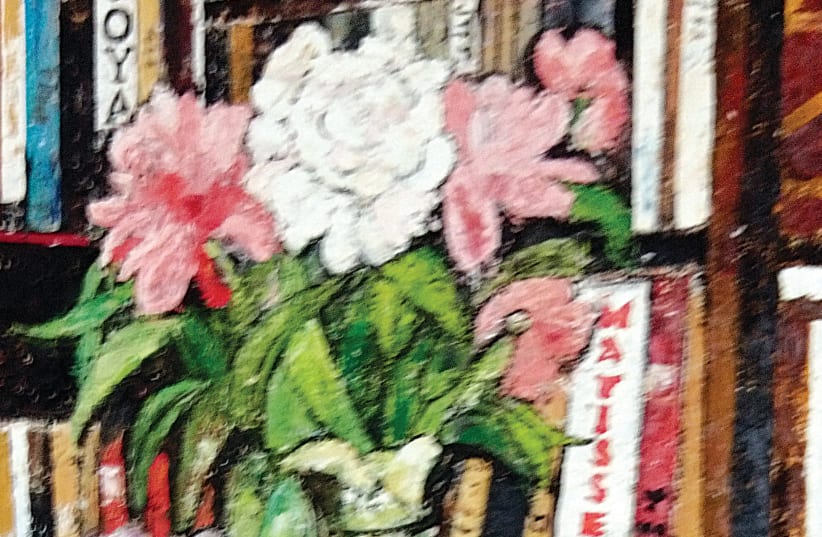The Yom Yom Hag group exhibition theme is diversified and varied. Images “capture” traditional, literal interpretations of the theme and seemingly unrelated to it. Such hermeneutical variation somehow still exists as one unified vision or body. While no one seemed to express content that may have appeared offensive, Dadaist or shocking, this may be critiqued as a downfall. Yet on closer inspection one notes that indeed light and darkness is present. The point of unification and what makes this exhibition strong is that it still resounds with the emphatic Hebrew word “or,” light. Yes, both positive and negative elements obtain in life (art), but there is still a choice to be made: One can choose to love and then the festivals sing, then the day is joyous, and the dream is real.
To help the viewer on their way, many pictures focus on flowers. There are images of students of the mind, and of architectural wonders in Israel. There are abstract paintings and paintings of festive meals. There is a sense of pensive estrangement. There are images with a sense of taking flight (especially the sculptures). There are tight observational explorations and expressive works. There are even other cultures and a certain craziness in respect of the festivals.
So, the deeper question that the exhibition asks, perhaps beyond the light of its representation, is this: How can all this diversity and multiplicity be contained within the days of the festivals? Is that not simply an irreconcilable conundrum?
Such considerations are a retreat into a certain process of thought and one must be brought back to the aesthetic qualities and the humanness of creating a work of art in the first place. Then again, one may ask whether art is a culturally noble pursuit or not, which often is the mouthpiece for culturally (politically, religiously) dangerous modes of power. And then I return to what I see: a sense of music, of celebration, of examination, of learning, of dancing and play. And I especially like the recurring image of the candle sticks.
In an open society, the interpretation of a theme marked with such differences is a healthy means of finding common ground, of inclusivity and a binding of the organic dynamic of a society. The point is not drone-like sameness, but individual expression and introspection. One probably will not avoid a confrontation in life – it is certainly a challenging journey – but art lightens the burden, and this exhibition reflects on the energetic potential for daring to question and then solidifying some aspect of the self within an art object.
Ofer Anak’s work – extremely painterly, textured surfaces – reveals a complex family dynamic together at a festive meal, the interplay of a confrontation of cultures and educational references. Yet still there is an inner glow. The mute resistance to art gives way to a sense that one can transcend one’s own story or at least identify one’s own story with other people. Art then is communication and is served best in a gallery.
Yet like a zoo, art is in captivity so that the very point of the gallery is that eventually galleries will be obsolete, theaters will fall away, sports stadiums will no longer be (and therefore news and media, too). No. People will simply make art and run and play. There is no audience. There is no hero. Art will have served its purpose in its now-undefined state. This is the primordial innocence of art and its message. Simply paying lip service to art then is like worshiping the finger that points “above.”
